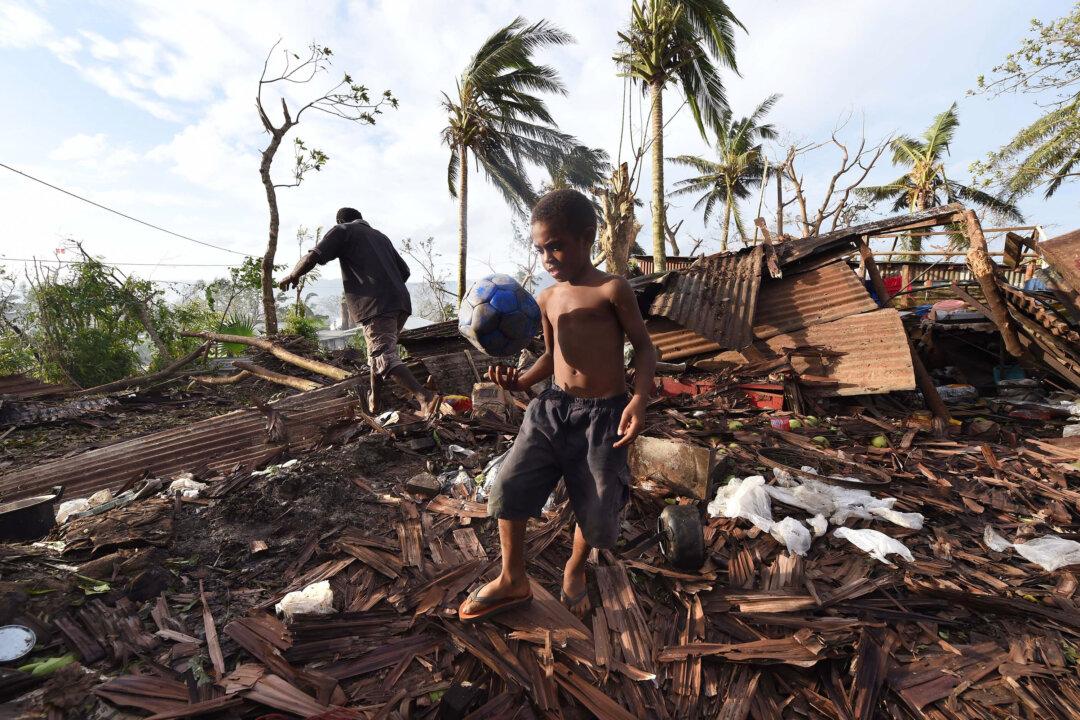Are recent superstorms like Cyclone Pam—which ravaged Vanuatu over the weekend—or Typhoon Haiyan that hit the Philippines last year a result of climate change?
This week, the president of Vanuatu, Baldwin Lonsdale, made the assertion that climate change is contributing to the disaster in Vanuatu.
“This cyclone is a huge setback for the country’s development,” Lonsdale told the Third U.N. World Conference on Disaster Risk Reduction in Sendai, Japan, on March 14. “This is why I am attending this conference and why Vanuatu wants to see a strong new framework on disaster risk reduction, which will support us in tackling the drivers of disaster risk such as climate change.”
Cyclone Pam, a Category 5 storm, had sustained winds of 165 mph, destroyed homes and businesses, and killed at least 24 people last weekend.
In 2013, Vanuatu established a Ministry of Climate Change and Natural Disaster Risk Reduction.
And while some climate scientists have noted that it’s impossible to tie any singular weather event to climate change, it does raise the question: Is Lonsdale right in linking the devastating storm to climate change?
To a certain extent, he is, said Dr. Pamela Chasek, an author and editor of several books on international environmental policy and who is a professor at Manhattan College in New York City.





